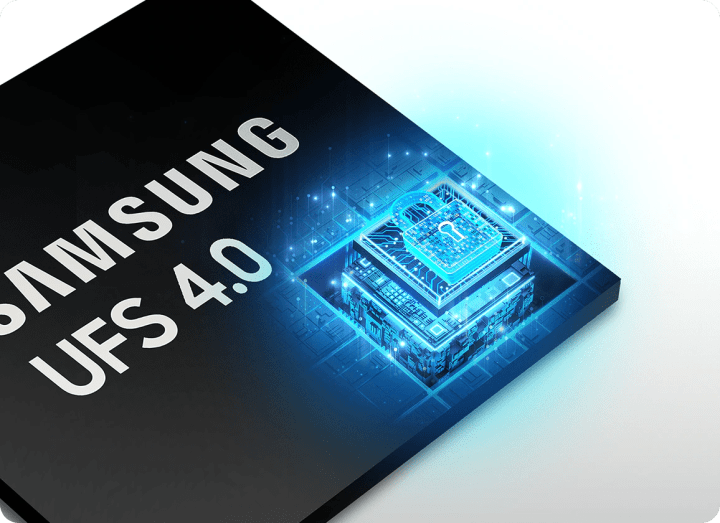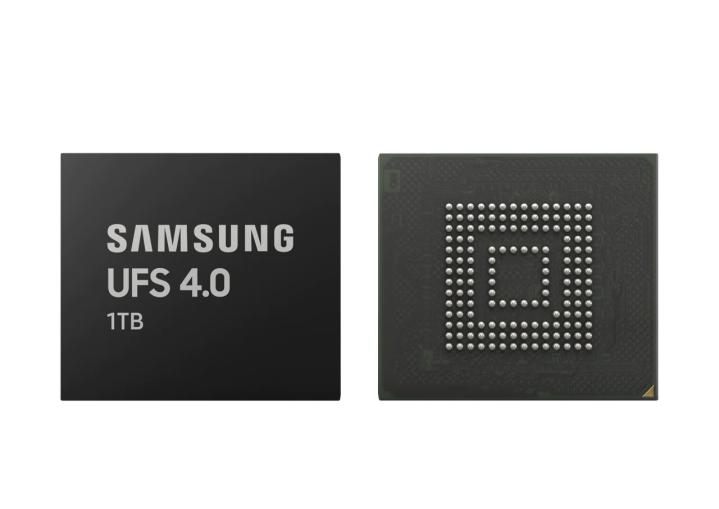Universal Flash Storage (or UFS) has gained significant popularity in recent years. In its early days, the tech was limited to flagship phones due to its high pricing. But now, it’s often found in mid-range phones, too. UFS has been around since 2010, and since then, we have seen three more iterations of the storage tech.
Samsung introduced the fourth iteration of Universal Flash Storage (UFS 4.0) in May 2022. UFS 4.0 is an upgrade to the UFS 3.1 storage introduced in 2020. Samsung claims that the tech brings major performance and efficiency improvements. But does any of that actually matter?
What Universal Flash Storage is
Before we dive deeper into UFS 4.0, let’s quickly understand what UFS is. As mentioned earlier, Universal Flash Storage is a standard used in smartphones and other gadgets like digital cameras and tablets. UFS storage was introduced as a faster alternative to eMMC storage. While eMMC storage is still used in some smartphones, UFS storage has mostly taken over the mid-range and high-end segments.

What makes UFS better than eMMC? UFS can perform read and write operations simultaneously, unlike eMMC, which has to do each task separately. Plus, UFS benefits from larger bandwidth support. It’s not a deal-breaker to buy a phone with eMMC in 2022, but if you have the option for UFS over eMMC, UFS is the way to go.
All the benefits of UFS 4.0
UFS 4.0 is the latest standard of Universal Flash Storage approved by JEDEC. For those unaware, JEDEC (Joint Electron Device Engineering Council) is a global organization that develops open standards for microelectronics. Samsung says that UFS 4.0 is twice as fast as its predecessor. This is due to the use of the company’s seventh-generation V-Nand technology and its in-house controller.
UFS 4.0 can achieve read speeds of up to 4200MB/s and sequential write speeds of up to 2800MB/s. In contrast, UFS 3.1 has read and write speeds of up to 2100MB/s and 1200MB/s, respectively. Along with the massive improvement in speed, UFS 4.0 is also very power efficient with up to 46% increased efficiency. Within this new standard, per lane speed goes up to 23.2Gbps, which is twice as fast as the previous standard.

UFS 4.0 has a compact form factor in order for it to be fitted in smartphones and other electronic devices (AR, VR, and automotive applications). To give you an idea, UFS 4.0 has a maximum size of 11mm in length, 13mm in width, and 1mm in height. Another thing to note here is that the standard allows up to 1TB of storage, which was earlier limited to 512GB.
Why UFS 4.0 is needed for future smartphones
Faster storage is as important for a smartphone as the processor. If the storage installed on your phone isn’t fast enough, you will notice slower boot-ups, longer app loading time, and higher power consumption.
While UFS 3.1 offered great performance, UFS 4.0 takes it to the next level. Due to the increased bandwidth, users will experience improved game and app loading time. Resource-intensive tasks — such as video editing, video recording at a high frame rate, etc. — will also benefit from this new tech. Besides this, UFS 4.0 is a boon for battery life on smartphones since it offers 46% more efficiency than UFS 3.1.
When you can use UFS 4.0
The mass manufacturing of UFS 4.0 is likely to start in the third quarter of 2022. As such, you’ll have to wait until late 2022 or early 2023 before you can buy a phone with the tech. While nothing is confirmed quite yet, we’re expecting to see UFS 4.0 on the
Editors' Recommendations
- Wear OS 4 is coming to your smartwatch this year — here’s what’s new
- Does the Samsung Galaxy Z Fold 4 have an SD card slot?
- Galaxy Z Flip 3, Galaxy Z Fold 3 to get One UI 4 Beta soon
- The DJI OM 4 is a smartphone gimbal with drone-like tracking
- The Pixel 4 won’t have free, unlimited full-res Google Photos storage




